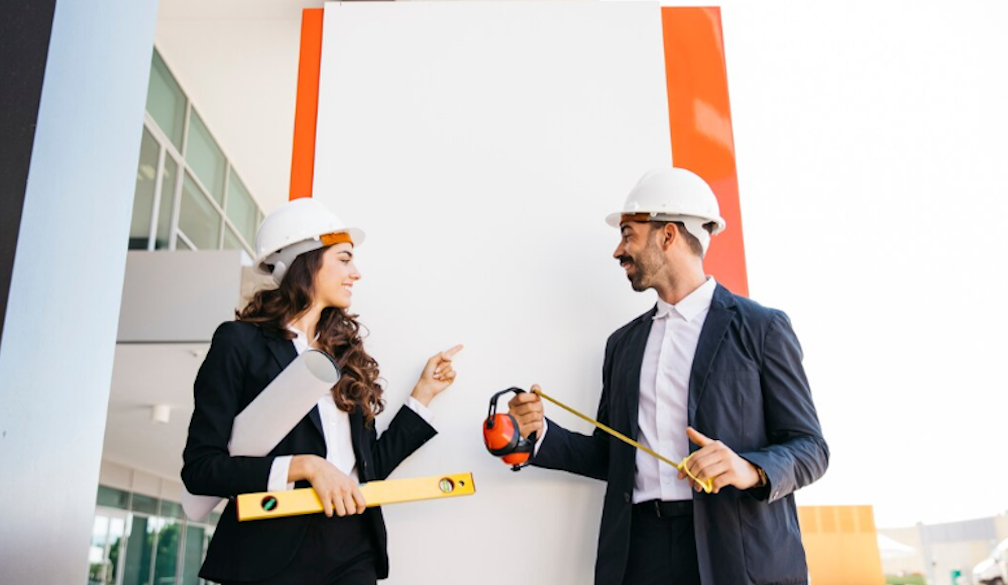Important Considerations When Constructing Your Office Building

In the world of business, the functionality and design of your office building can significantly impact your operations and team productivity. A well-planned office space can enhance employee productivity, foster creativity, and contribute to the overall success of your organisation.
But what are the key considerations when constructing your office building? We have created a checklist below that will help you ensure that you will construct your office space correctly.
Hire The Right Contractors
Constructing an office space is a significant investment in your business's future, and finding the right partner for this venture can make all the difference. Hiring the right contractors can save you time, money, and a great deal of stress.
When you hire professional contractors with a solid reputation and strong portfolio like Tetra Tech Coffey, you're buying into their expertise and experience. These professionals understand the ins and outs of office space construction, ensuring that the result aligns with your vision and meets all regulatory requirements.
Additionally, professionally managed construction projects are more likely to stay on schedule and budget. Experienced contractors have the resources to handle unexpected issues, preventing costly delays and overruns.
You must also remember that the right contractors have access to high-quality materials and ensure superior workmanship. This means that your office space won't just look great but will also stand the test of time.
Perhaps the most significant benefit of hiring the right contractors is the peace of mind they offer. You can rest easy knowing that your office space construction is in expert hands, leaving you free to focus on running your business.
Location
Another crucial factor to consider when constructing your office building is the location. The location is an integral factor that can significantly influence the success of your business. Selecting the perfect spot is not just about being in the city's heart or near amenities; there is much more to consider.
An office building that stands out and can be easily identified helps build your brand image. A prominent, recognisable location can make your business more appealing to potential clients as it projects professionalism and credibility.
Near amenities such as restaurants, banks, and shopping centres can be a plus. It makes it convenient for employees during breaks and leaves a positive impression on clients. After a meeting, they could grab a coffee or run some errands, enhancing their overall experience with your company.
The geographical positioning of a business is paramount in acquiring and maintaining top-tier talent, as many professionals consider location a key factor in balancing their personal and professional lives.
Prudent choices about the company's location can greatly enhance its performance. On the contrary, ill-advised decisions can result in substantial losses, encompassing talent attrition, diminished productivity, and capital depletion.
Building Design
These days, the design of an office space is far more than a simple layout of desks and meeting rooms. It's a strategic, thought-out approach to creating a workplace that influences employee productivity, company culture, and the overall business operation.
Firstly, an effective office design optimises space utilisation. Through meticulous planning and layout, every square foot can be effectively utilised to accommodate the necessary workforce and operations without causing a cramped environment.
Secondly, the design of an office space impacts employees' well-being and productivity. A well-lit, airy office with ergonomic furniture can enhance comfort, lessen fatigue, and reduce health-related absences. Moreover, incorporating elements such as greenery or leisure spaces can reduce stress and boost morale.
Lastly, the design of an office space can embody the company's culture and ethos. Whether a traditional, cubicle-style layout reflecting a hierarchical structure or an open-plan design encouraging collaboration and transparency, the office layout silently communicates the company's values and expectations.
Sustainability
In today's world, where environmental concerns are more pressing than ever, businesses must take proactive steps towards sustainability. Regarding office spaces, adopting sustainable building practices is not merely a trend but a necessity.
It’s a known fact that 39% of greenhouse gas emissions are building-related. Hence, considering energy-efficient practices and sustainable materials during construction can significantly reduce your building's environmental impact.
Sustainability in office buildings goes beyond reducing the environmental footprint. It also creates healthier, more productive workplaces. Moreover, a sustainable office space can offer significant cost savings in the long run. Businesses can significantly reduce their operational costs through efficient energy use, water conservation, and waste reduction.
Building a sustainable office is also an effective way to demonstrate a company’s commitment to environmental responsibility. It serves as a tangible representation of the company's values, helping to attract like-minded employees and customers.
Technology Integration
A harmonious blend of technology and construction not only enhances the aesthetic appeal of a building but also significantly improves its functionality, efficiency, and sustainability.
First, Building Information Modelling (BIM) technology has revolutionised the construction industry. It allows architects, engineers, and construction professionals to collaboratively plan, design, and manage buildings, thereby minimising errors, reducing waste, and saving time and costs.
Furthermore, technology enables the construction of 'smart buildings'. Equipped with Internet of Things (IoT) devices, these buildings optimise energy usage, improve security, and provide employees with a comfortable and productive work environment. For instance, sensors can detect unoccupied rooms and automatically turn off lights, saving energy.
In addition, technology aids in meeting sustainability goals. Green building technologies such as solar panels, efficient HVAC systems, and water-saving fixtures help reduce a building's carbon footprint and operating costs.
Conclusion
The construction of an office building is a significant investment and requires thoughtful consideration of several factors. By keeping the considerations mentioned in mind, you can create a space that is not only functional and productive but also contributes positively to the environment and the well-being of your employees.











